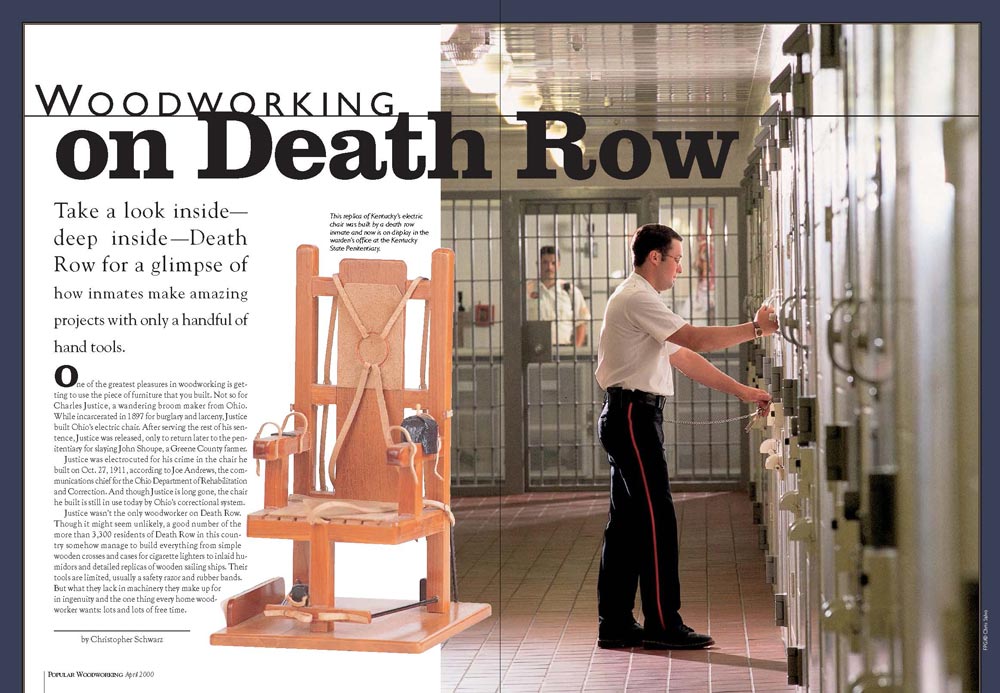We may receive a commission when you use our affiliate links. However, this does not impact our recommendations.
I’m leaving the world of woodworking magazines after 22 years as an editor, writer and builder. But I don’t think I’m a rat fleeing a sinking ship. I still think printed magazines have a place in our digital age. But to survive, a magazine requires an editor with a set of brass ones.
First, let me say that almost everything I’ve read about woodworking magazines on forums and in comments does not resemble my experience in media. Most of the commenters have never worked in the field, but they have a cousin who worked for a weekly newspaper in Monkey’s Eyebrow, Ky. So ergo – media genius.
The following might be crap as well. But it is crap that has accumulated in my head since I was tracked into the journalism program at age 13 at Chaffin Junior High. And I’m still in that track at age 50. Here we go.
The Reader is Usually Wrong
Editors have two broad choices about how to run a magazine. She can be a lamp or a mirror. The mirror approach is the easiest. You survey people about what they want to read, and then you tailor your editorial content to satisfy that need.
There are two problems with that approach. First, few editors really know anything about designing and executing a survey that is free from biases, that uses proper controls and that offers statistically significant results. Even if they wanted to do these surveys, they wouldn’t because they are incredibly expensive. Good data costs money.
And so most of the magazine survey results that I’ve seen – in the woodworking industry and out – create editorial that is akin to mushy peas or Zwieback toast. Yes, it might seem edible, but it will kill you in the long run.
The second problem with “giving the people what they want” is the people themselves. Imagine you are a kindergarten teacher and you ask the students: What should we learn this year? And then you created a lesson plan based on recess, cartoons and pulling Janet’s hair.
That’s why I prefer the riskier approach of trying to be the lamp.
Simply put, chase after what is deeply interesting to you. Find stories, writers and approaches that stand in stark contrast to what you believe. Approach writers who criticize your magazine and find out what they would publish. Don’t publish anything with the word “ultimate” in it. Search out difficult people who might not even be literate (we had a couple) and ghostwrite for them. Avoid writers who make most of their income from writing. Their copy might be easy to edit, but it will likely be boring.
Be in trouble – both with your staff and your superiors – because of your editorial decisions. I had two staff members who I thought were going to take a swing at me (and this is because of my editorial decisions). If your magazine is good, it will make money, and the people above and below you will (likely) respect your approach.
Advertising
Decide if you work for the readers or the advertisers. It’s easier to make a few dozen advertisers happy than 200,000 readers. The problem with the advertising approach is that it can quickly go sour on you. If a few fickle advertisers get grumpy, your magazine will suffer or (if a lot get grumpy) even go under. If a few readers get grumpy, you’ll be fine.
Don’t Take Free Stuff
It’s easy to take free tools, hardware or supplies. Resist that path because it leads to making infomercials. If you need a tool (for a review, for example) and your budget can’t afford to buy it, borrow it and send it back. Be honest with your readers about this. If you take a free tool, be a big girl or boy and at least admit it in print.
Why Am I Telling You This?
The woodworking internet doesn’t do the difficult stuff (in general). It’s driven by personal celebrity, quick-and-easy SEO-driven stuff and iconoclastic approaches to making things in garages. I love the internet and wish it well. But great content requires money, time and hard effort. It’s then expensive to take that great content, print it on paper and mail it out across the world. And it’s impossible to please 200,000 people and convince them to send you money.
But I think if you find editors who will take the hard road every time, there’s a chance that magazines will still be lining the finest birdcages in 2124.
— Christopher Schwarz
Here are some supplies and tools we find essential in our everyday work around the shop. We may receive a commission from sales referred by our links; however, we have carefully selected these products for their usefulness and quality.











I’m a current subscriber to the print edition, and its surprising that we can have beautiful publications like Mortise & Tenon, and Pop Wood redesigns their magazine to look like a tutorial on desktop publishing from 1985 using Aldus PageMaker. I imagine this business is very difficult, but the look screams “how to build a birdhouse”, while the content still has guys like Peter Follansbee. I wonder how long it will be before this changes. I’ll always cherish the back issues, but I’ll probably only keep the subscription to Fine Woodworking at this point, as I can’t tell what Popular Woodworking is trying to be.